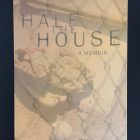Hello from the Other Side: Why We Need and Ought to Translate and Read Translations

As children, we’re both fascinated with the idea of the great big world around us, and consumed with the notion that we are at its center. I recall sleepless nights, hearing my father return home late from work, and tiptoeing past my sleeping sister’s bed to the living room so that I could sit with him and ask him all sorts of questions about other places and people. Later, as a high school student and during my mandatory service in the Israeli military, the idea that there was all this space around me, so many places to explore, served as great consolation in a time when my freedom of movement was extremely limited: I would, one day, see all these places and learn their radically different ways. In my mid-twenties, after having done some traveling, I began to realize that the differences between countries and cultures were not as clear-cut and simplistic as I’d imagined. Rather, they were subtle, elegant, and they deserved careful examination. I also realized, around the same time, that no matter how many adventures I had, there was no way I would be able to see it all. Every time I saw pictures of a place I’d never been to, or even just its name on the map, I felt my stomach turn with yearning. I just wanted to know.
This is probably why translation has become so precious to me: the idea that I could, through reading literature from a different time and place, experience a hint of that delicious strangeness, visit a place I may never set physical foot in. The idea that I, in turn, could transfer my own knowledge of Israeli culture—its beauty, its ugliness, its idiosyncrasies—to a language that would let others have a taste. It’s the urge to know and the urge to make known, the desire to see and the need to be seen.
In this, I am part of a minority. As translators often lament, and as Chad Post of Open Letter Books famously stated in his blog, The Three Percent, only three percent of all literature published in the U.S. annually is literature in translation. Either because readers are not interested in writing from unfamiliar locales and perspectives, or—and this seems more likely to me—because publishers fear that readers are uninterested and lack the motivation to offer something refreshing, the reality is that an image of the American reader has formed as one who flinches at the suggestion of reading anything that does not take place within the U.S., or, at the very least, within England or Canada. When books set in other countries do gain popularity, they are often of the Eat, Pray, Love persuasion—an American’s adventures abroad. Though the last few years have seen a hopeful shift away from this tendency with the immense success of translated series such as Karl Ove Knausgaard’s My Struggle and Elena Ferrante’s Neapolitan Novels, these are, as of yet, merely anomalies. As long as this inward attitude persists, we’re sure to form a society in which we can ignore the ways in which people live in non-English speaking countries.
To play devil’s advocate, one might suggest that each individual culture is already rich enough with its own artistic content, and that just as we find merit in eating local, shopping local, and growing local food in order to sustain our own economies and minimize our carbon footprint, there would be some logic in sticking to the literature of our own culture and language rather than printing thousands of books from other countries, which do not correspond to our individual experience, and which may or may not be read, making the already tough competition faced by young American writers even more impossible.
However, I do believe the damage would outweigh the advantages in this case. This isolationist attitude exhibits the same kind of close-mindedness about the lives, faiths, and histories of other cultures that is exhibited in Fox News outbursts such as “The War on Christmas,” in protest cries of “One nation under God, not Allah” or in Donald Trump’s comments about the people of Mexico. Worse still, it insinuates a worldview in which not only do we not care about the lives of other peoples, but we assume that they are either equal, or inferior, to our own, and therefore not worth exploring. The open-mindedness and curiosity that leads one to read books in translation also allows a more profound thinking of what life elsewhere looks like, moving on from childhood clichés and superficial knowledge of giraffes in Africa and camels in the Middle East and recognizing the complexity and beauty of distinct countries, cities, and populations.
From my point of view as an Israeli, it seems crucial that the people around me understand this complexity. After hearing a classmate express how refreshing it was to read a description I wrote of a beautiful stone house in Jerusalem, having always imagined Israeli buildings as little more than rubble, I realized that even in the minds of the intellectual and informed, Israel equals constant war and nothing more (as, I’m sure, I’ve imagined life in other countries I was less familiar with). The books that I and my colleagues translate aim not only to depict the political situation in Israel in more vibrant, more accurate tones, but also to reveal everything else that is going on: the multitudes of lives, opinions, and histories the country contains.
From a linguistic point of view, there is yet more to be gained from reading translated work. Even though it is translated into English, most translated literature still preserves some of its original’s choice words, grammar structures, and style. When reading a piece of writing originally composed in a foreign language, we have the opportunity to learn new phrases, slang, and idioms, thus not only expanding our knowledge, but our perceptions of communication. A world in which we are only ever exposed to our own art would not only be limited and separate. It would be a very ignorant and dangerous world in which to live.



